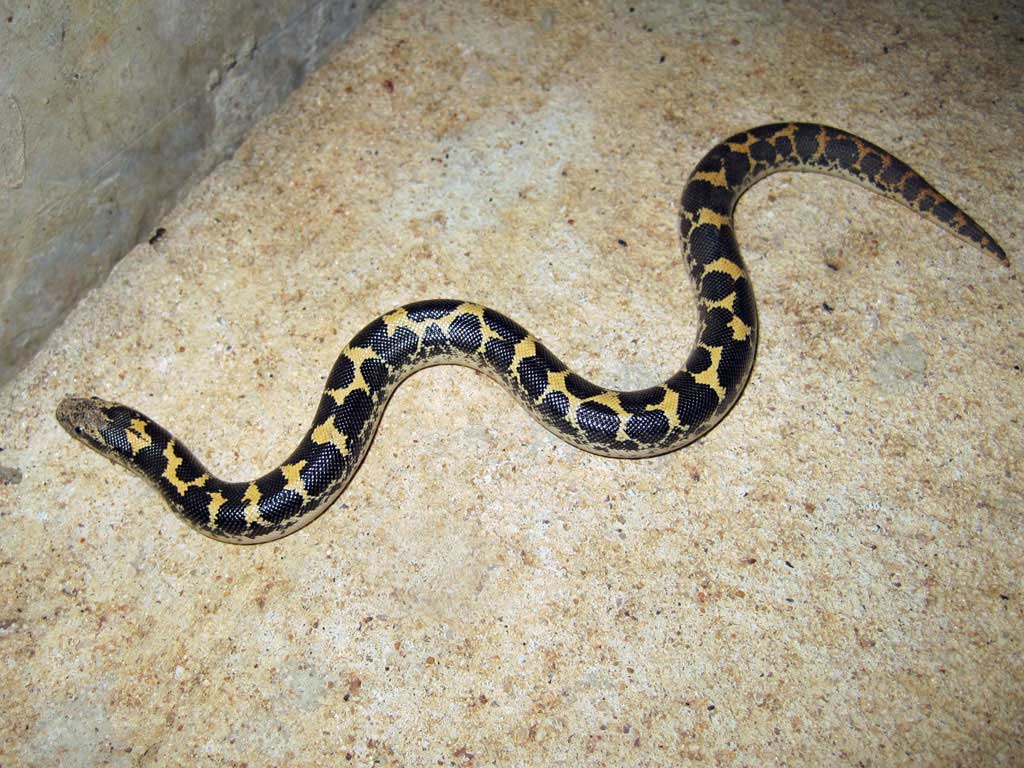Scales of the Kenyan sand boa minimize abrasive damage by exhibiting a gradient in hardness and elasticity.
Introduction
Life is literally rough for the Kenyan sand boa (Eryx colubrinus, sometimes called Gongylophis colubrinus), which lives in arid, sandy places in northern and eastern Africa. It not only slithers along sandpaper-like surfaces to get from one place to another, it also coats itself with coarse grains of sand that provide camouflage as it waits for a meal to walk, hop, or crawl by. As a result, the scaly outer skin that covers its body is exposed to huge amounts of abrasion. How does the sand boa keep from getting literally all worn out by the rough substrate in which it covers itself, while still staying flexible enough to move smoothly across, and stay in close contact with, each other and uneven surfaces? The answer lies in the nature of the skin itself, which uses a combination of materials to give different desirable qualities to different parts of the scale.
The Strategy
A snake’s belly skin has an outer scale layer, which touches the sand and other scales. It also has an inner scale layer, which underlies the outer scale layer and does not directly come in contact with the outside world.
The outer scale layer consists of six main layers. The layers on the side that contacts the outer world (the beta layer) contain beta-keratin, a molecule that also makes up bird beaks and claws, and is relatively hard and inflexible. The layers on the side that faces the inner scale (the alpha layer) layer contain alpha-keratin, which is found in structures such as human fingernails and hair, and is softer and more flexible.
Both hardness and flexibility vary across the cross-section, with the outer surface being harder and less flexible and the inner surface being softer and more flexible. For the snake’s skin, this means the ability to be extra scratch-resistant but also have the flexibility needed to subtly adjust the shape of the skin to a rough surface and so distribute stress and reduce the likelihood of cracking. The result is a structure that is tough enough to stand up to sand, yet flexible enough to allow movement and avoid cracking.
The result is a structure that is tough enough to stand up to sand, yet flexible enough to allow movement and avoid cracking.
The Potential
The strategy of combining hardness and flexibility in a layered configuration that provides strength where needed but flexibility too could be useful for designing durable but pliable medical devices, tires, fabrics, and more. Substances and configurations that minimize destruction due to friction can inform the design ofmovable parts in vehicles and other machinery, textiles, and cutting edges such as those on knives and blenders.In addition the Kenyan sand boa’s “best of both worlds” strategy offers a broader lesson: When designing to optimize between two competing needs, it’s wise to remember the best solution may not be a single optimum, but different optima customized to the location and function within the larger system.








